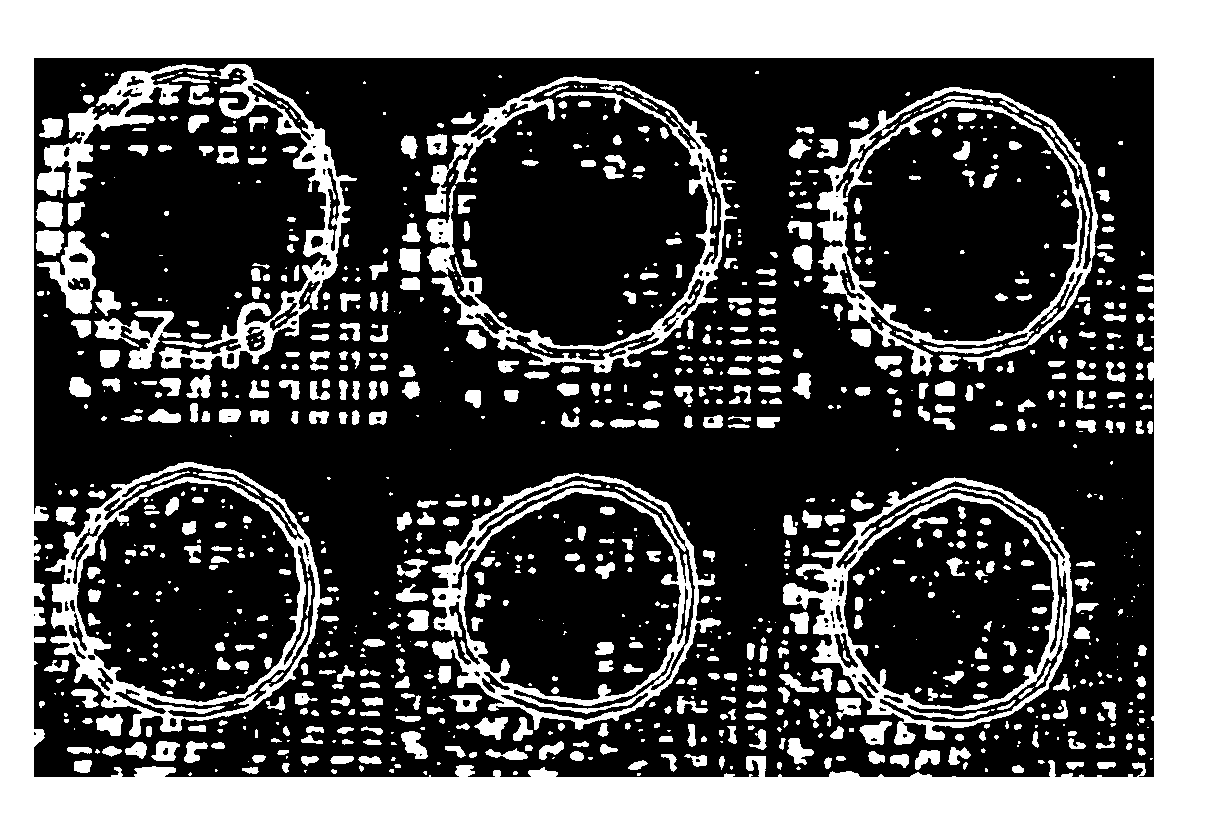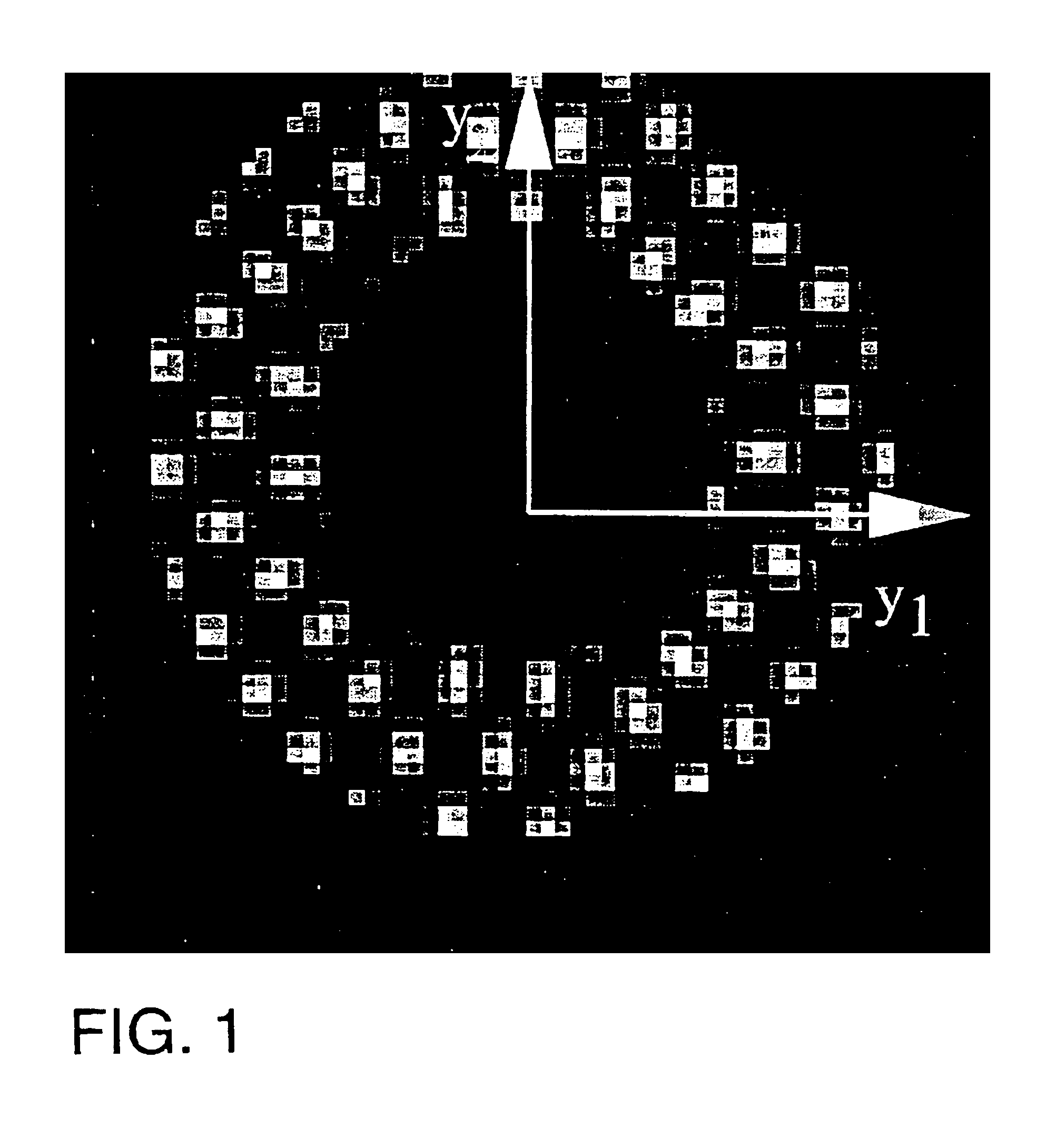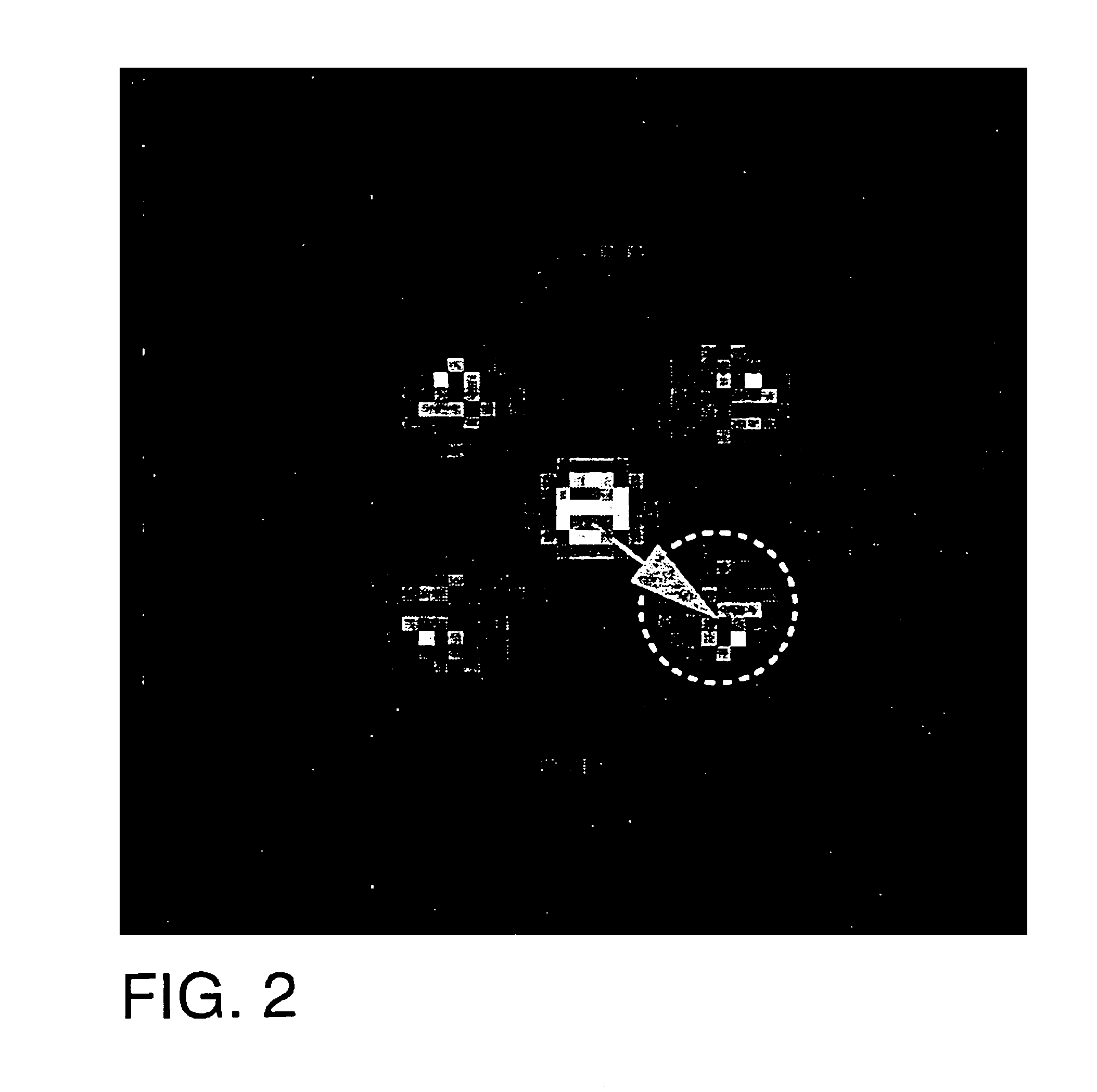Cardiac motion tracking using cine harmonic phase (HARP) magnetic resonance imaging
a magnetic resonance imaging and cine harmonic phase technology, applied in the field of measuring heart motion using magnetic resonance imaging, can solve the problems of low signal-to-noise ratio, inability to automatically analyze planar tagging images, and inability to automate approaches
- Summary
- Abstract
- Description
- Claims
- Application Information
AI Technical Summary
Benefits of technology
Problems solved by technology
Method used
Image
Examples
example 1
[0123]To demonstrate the capabilities of HARP tracking, a set of tagged images of an electrically paced canine heart were used. These data were previously used in a study of cardiac motion under electrically paced activation using tagged magnetic resonance imaging and analysis techniques. A complete description of the experimental protocol and their results are given in Lima et al., “Segmental motion and deformation of transmurally infarcted myocardium in acute postinfarct period.” Am. J. Physiol., 268(3):H1304-12, 1995. Although the present results yield only apparent motion and strain on a single cross-section rather than giving a complete 3-D description, the results obtained here are very nearly the same as those in Lima et al., but are generated in only a fraction of the time. This provides the benefit of accurate, rapid results through use of the methods of the present invention.
[0124]A pacing lead was placed in the left ventricular basal free wall of a canine heart. Magnetic ...
example 2
[0131]This example involves the use of HARP tracking of the cardiac motion of a normal human male volunteer age 27 undergoing a dobutamine-induced (5 μg / kg / min) cardiac stress. This example includes the very rapid motion of this heart under dobutamine stress and the use of HARP refinement to correct incorrectly tracked points.
[0132]The images were acquired on the same magnet using the same basic imaging protocol as in the canine studies described hereinabove. SPAMM tags were generated at end-diastole to achieve saturation planes orthogonal to the image plane separated by 7 mm. Two sets of images with vertical and horizontal tags were acquired in separate breath-holds. Four slices were acquired, but only the midwall-basal slice is used in this example. Scanner settings were as follows: field of view 36-cm, tag separation 7-mm, 8-mm slice thickness, TR=6.5-ms, E=2.3-ms, 15° tip angle, 256×160 image matrix, 5 phase-encoded views per movie frame.
[0133]FIG. 16(a) shows the resulting hori...
PUM
 Login to View More
Login to View More Abstract
Description
Claims
Application Information
 Login to View More
Login to View More - R&D
- Intellectual Property
- Life Sciences
- Materials
- Tech Scout
- Unparalleled Data Quality
- Higher Quality Content
- 60% Fewer Hallucinations
Browse by: Latest US Patents, China's latest patents, Technical Efficacy Thesaurus, Application Domain, Technology Topic, Popular Technical Reports.
© 2025 PatSnap. All rights reserved.Legal|Privacy policy|Modern Slavery Act Transparency Statement|Sitemap|About US| Contact US: help@patsnap.com



